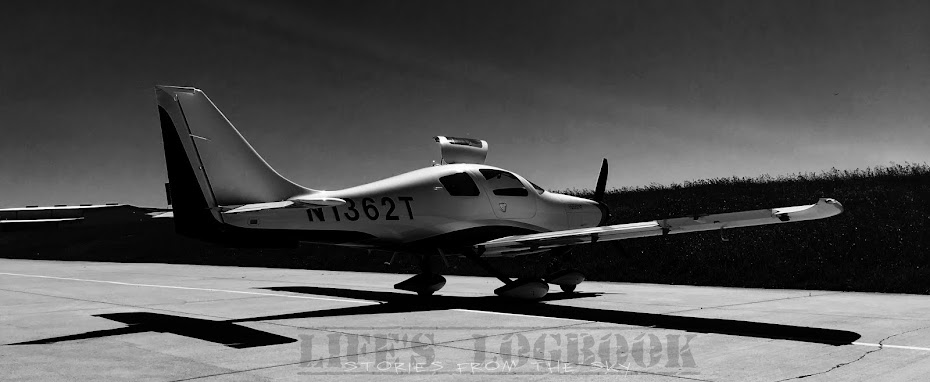It was somewhat of a bittersweet day with the replacement of my private pilot certificate with a commercial pilot certificate. Over the course of the six years I have been flying under the private certificate and everything has been under the umbrella of the privileges and limitations of that certificate. Things added along the way included a high performance endorsement, complex endorsement, and even the instrument rating. None of these change the fact that the certificate is still a private category. The passing of today's check-ride signaled things were a little different now however.
The training for this check-ride has been a drawn out process that really started late in the Summer of 2014. Brandon at Ayers Aviation finished up the training I needed and helped prepare me for the oral exam portion of the exam.
I have only been flying the Bonanza for a year and have gotten somewhat familiar with getting acceptable performance out of it, especially when compared to prior aircraft that I had flown. The transition training I took to meet the insurance requirements wasn't aimed at becoming an expert in the airplane, but rather to be safe and familiar with the systems. Most of my experience flying this beautiful Beechcraft product since then has been on long cross-country flights where you rarely see the edges of the performance envelope. It was great to get to use this airplane for the training required for the commercial certificate.
I learned so much about getting the absolute most out of the airplane. I was in the airplane multiple times every week and we grew close as I learned the little nuances it had. It would remind me of times I was feeding it too much fuel as we had climbed thousands of feet doing chandelles or that I had left the cowl flaps open while spiraling back down with the engine at idle. It treated me well and was patient with me. It is a sweetheart of a machine and will open its pipes and scream when the throttle gets thrown forward.
The training for this check-ride has been a drawn out process that really started late in the Summer of 2014. Brandon at Ayers Aviation finished up the training I needed and helped prepare me for the oral exam portion of the exam.
I have only been flying the Bonanza for a year and have gotten somewhat familiar with getting acceptable performance out of it, especially when compared to prior aircraft that I had flown. The transition training I took to meet the insurance requirements wasn't aimed at becoming an expert in the airplane, but rather to be safe and familiar with the systems. Most of my experience flying this beautiful Beechcraft product since then has been on long cross-country flights where you rarely see the edges of the performance envelope. It was great to get to use this airplane for the training required for the commercial certificate.
I learned so much about getting the absolute most out of the airplane. I was in the airplane multiple times every week and we grew close as I learned the little nuances it had. It would remind me of times I was feeding it too much fuel as we had climbed thousands of feet doing chandelles or that I had left the cowl flaps open while spiraling back down with the engine at idle. It treated me well and was patient with me. It is a sweetheart of a machine and will open its pipes and scream when the throttle gets thrown forward.
It was an adventure worth remembering in an airplane I enjoy flying each time out.
Thanks Bo









